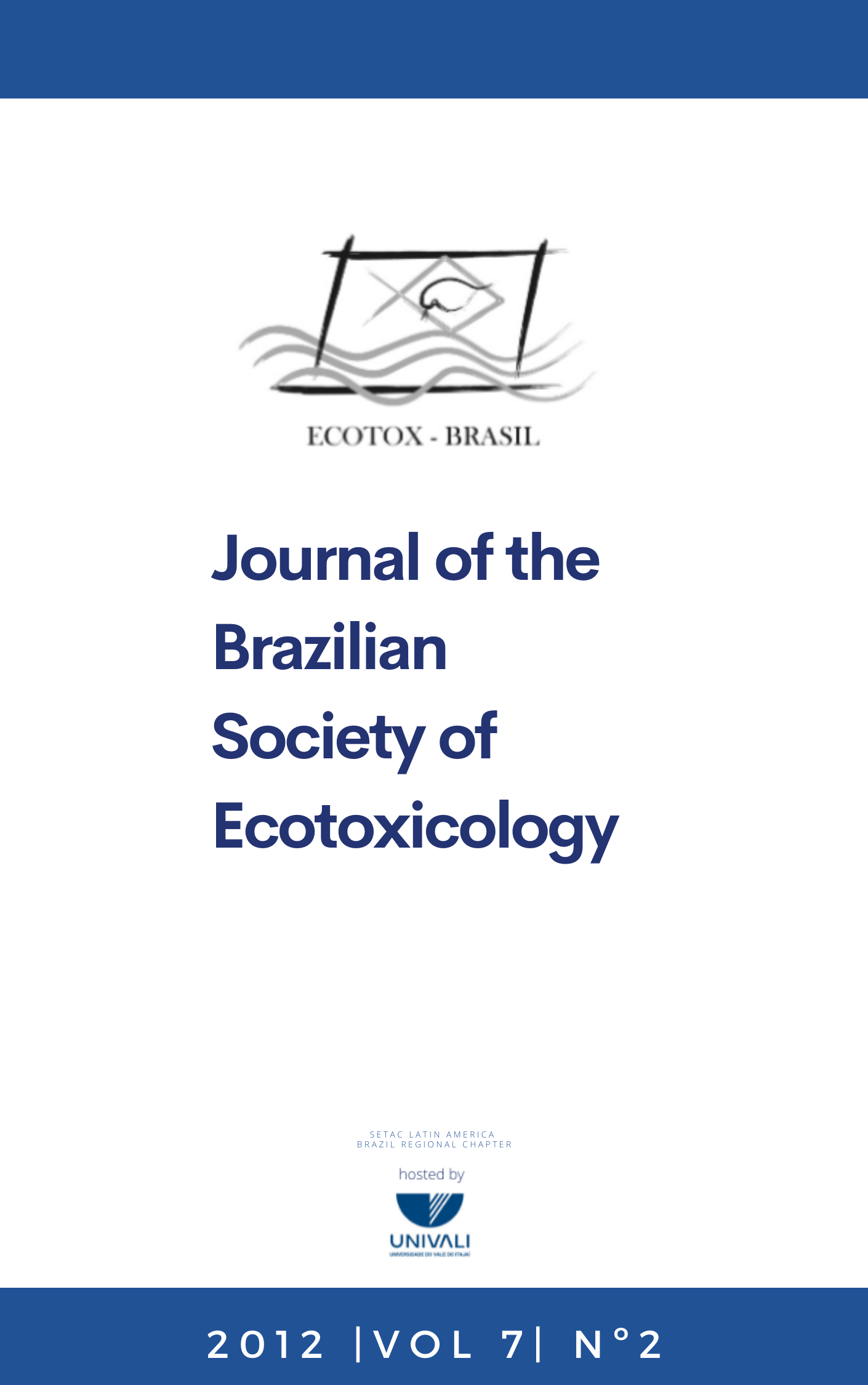Ecotoxicological effects of Vertimec® 18EC on plankton
Abstract
The use of pesticides to boost crop yields is increasing. However, their adverse effects are unquestionable. One major problem is the fact that they have a broader effect than just on target organisms, being carried by the rainwater, leached or volatilized. Among wide used agricultural chemicals is the acaricide/insecticide abamectin (also known by the trade name Vertimec® 18EC). The present work evaluates the toxicity of Vertimec® 18EC on cladocerans Daphnia similis and Ceriodaphnia dubia and alga Pseudokirchneriella subcapitata. Two land plots were prepared, one contaminated with Vertimec® 18EC and the other used as a control. After simulated rainfall, samples of the runoff water were collected and used in acute and chronic bioassays to verify the effects of the contaminant on planktonic organisms. The results showed high toxicity to the cladocerans. For D. similis the 48h EC50 was 13.87% in the runoff, corresponding to 5.54 μg L-1 of abamectin. For C. dubia it was impossible to calculate the inhibition concentration because the effect was lethal, preventing reproduction. No toxic effect was noted for P. subcapitata. However, a physical inhibitory effect was observed due to the high concentration of suspended material in the water samples.
Keywords: abamectin, Ceriodaphnia dubia, Daphnia similis, pesticides, Pseudokirchneriella subcapitata, soil-water interaction, toxicity.
Downloads
How to Cite
Issue
Section
License
Copyright © 2006 ECOTOX-Brasil
Copyright notice: It is a condition for publication that manuscripts submitted to this journal have not yet been published and will not be simultaneously submitted or published elsewhere. By submitting a manuscript, the authors agree that copyright for their article is transferred to the Sociedade Brasileira de Ecotoxicologia (ECOTOX-Brasil) if and when the article is accepted for publication. The copyright covers the exclusive rights to reproduce and distribute articles, including reprints, photographic reproductions or any other reproduction of a similar nature, including translations. No part of this publication may be reproduced, stored in a retrieval system or transmitted in any form or by any means, electronic, mechanical, photocopying, recording or otherwise, without permission of the publisher.
Notice: While every effort is made by the EEC, editors and editorial board to see that no inaccurate or misleading data, opinions or statements appear in this journal, they wish to make it clear that the contents of the articles and advertisements published herein are the sole responsibility of the contributors or advertisers concerned. Accordingly, the EEC, the editorial board and editors and their respective employees, officers and agents accept no responsibility or liability whatsoever for the consequences of any inaccurate or misleading data, opinion or statement.




